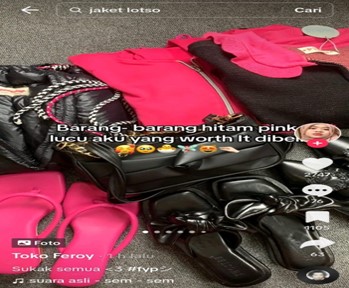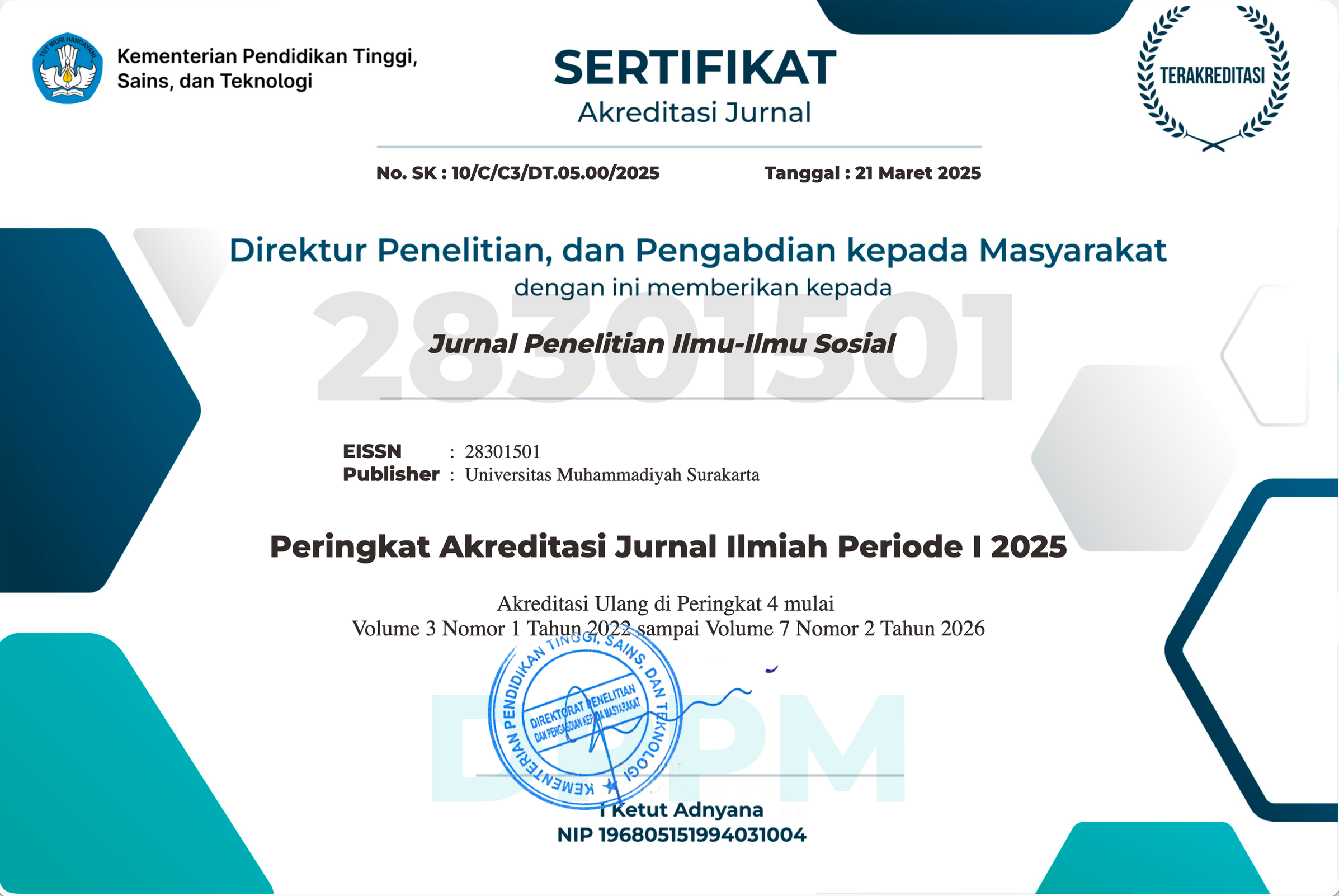TikTok as a Media for Self-Existence among Gen Z in the Middle of the Covid-19 Pandemic
DOI:
https://doi.org/10.23917/sosial.v4i1.1706Keywords:
self-existence, gen z, covid-19, self-concept, TikTokAbstract
The use of new media during the Covid-19 pandemic is increasing among several generations, especially Gen Z, who are categorized as a generation that is very close to technology. They often use TikTok as primary media. TikTok is a platform that provides a lot of information in videos. This study aims to determine the self-concept of sociology students at UIN Sunan Gunung Djati Bandung in using TikTok, the factors driving the use of TikTok, and changes in attitudes that occur due to the use of TikTok. A descriptive qualitative is used to describe the use of TikTok in Sociology Students at UIN SGD Bandung. This research investigates various self-existences on TikTok in terms of self-perceptions, promoting beauty and fashion, education, relaxation, and attitudes. On the other hand, Mead's theory explains the desire to be equal to others. Also, Mead said that another self-concept is the existence of new sources of information and educational media during the Covid-19 outbreak. Thus, this research can provide an overview of the use of TikTok as a medium of self-existence that can benefit its users.
Downloads
References
Adiawaty, S. (2020). Pandemi Covid-19 dan Kinerja Dosen (Study Kasus Kinerja Dosen pada PT XYZ). ESENSI: Jurnal Manajemen Bisnis, 23(2), 191–198. https://doi.org/10.55886/esensi.v23i2.204
Anjani, T. D. (2022). Persepsi Masyarakat terhadap Pemberlakuan Pembatasan Kegiatan Masyarakat dalam Mencegah Penyebaran Virus Covid 19 [Universitas Muhammadiyah Sumatera Utara]. http://repository.umsu.ac.id/handle/123456789/17434
Ariestuti, N. K. M., Purnawan, N. L. R., & Pradipta, A. D. (2023). Pemanfaatan Tren Tagar Welcome to Indonesia pada TikTok sebagai Sarana Kritik Sosial Generasi Y dan Z. E-Jurnal Medium, 3(2), 168–181.
Bulele, Y. N. (2020). Analisis Fenomena Sosial Media dan Kaum Milenial: Studi Kasus Tiktok. Conference on Business, Social Sciences and Innovation Technology, 565–572.
Creswell, J. W. (2012). Educational Research: Planning, Conducting, and Evaluating Quantitative and Qualitative Research (4th ed.). MA : Pearson Education.
Dewa, C. B., & Safitri, L. A. (2021). Pemanfaatan Media Sosial Tiktok sebagai Media Promosi Industri Kuliner di Yogyakarta pada Masa Pandemi Covid-19 (Studi Kasus Akun TikTok Javafoodie). Khasanah Ilmu - Jurnal Pariwisata Dan Budaya, 12(1), 65–71. https://doi.org/10.31294/khi.v12i1.10132
Fadhilah, & Saputra, G. G. (2021). Pengaruh Content Marketing dan E-Wom pada Media Sosial Tiktok terhadap Keputusan Pembelian Generasi Z. INOVASI: Jurnal Ekonomi, Keuangan Dan Manajemen, 17(3), 505–512.
Nurfazri, M. (2022). Teaching Critical Thinking to Foster EFL Students’ Ability to Distinguish from Factual and Fake News: Process and Result. UIN Sunan Gunung Djati.
Kami, I. M. (2018, July 2). Di Balik Fenomena Popularitas Instan Bowo Artis Tik Tok. Detiknews. https://news.detik.com/berita/d-4094569/di-balik-fenomena-popularitas-instan-bowo-artis-tik-tok
Khosiah, K., Hajrah, H., & Syafril, S. (2019). Persepsi Masyarakat terhadap Rencana Pemerintah Membuka Area Pertambangan Emas di Desa Sumi Kecamatan Lambu Kabupaten Bima. JISIP (Jurnal Ilmu Sosial Dan Pendidikan), 1(2), 141–149. https://doi.org/10.58258/jisip.v1i2.219
Lestari, N. H. (2023, May 4). Benarkah Gen Z Menjadi Generasi Paling Stres? Begini Faktanya. Tempo.Co. https://gaya.tempo.co/read/1721751/benarkah-gen-z-menjadi-generasi-paling-stres-begini-faktanya
Livana, P. H., Suwoso, R. H., Febrianto, T., Kushindarto, D., & Aziz, F. (2020). Dampak Pandemi Covid-19 bagi Perekonomian Masyarakat Desa. Indonesian Journal of Nursing and Health Sciences, 1(1), 37–48.
Maghfiro, S. (2022). Budaya Tiktok dan Perubahan Perilaku Remaja di Dusun Kisik Desa Gempol Kecamatan Gempol Kabupaten Pasuruan [Universitas Islam Negeri Kiai Haji Achmad Siddiq Jember]. http://digilib.uinkhas.ac.id/12187/
Mead, G. H. (1934). Mind Self and Society from the Standpoint of a Social Behaviorist (C. W. Morris, Ed.). University of Chicago.
Mulyana, D. (2005). Ilmu komunikasi : Suatu Pengantar (Muchlis, Ed.; 8th ed.). Remaja Rosdakarya.
Prianbodo, B. (2018). Pengaruh “Tiktok” terhadap Kreativitas Remaja Surabaya [Sekolah Tinggi Ilmu Komunikasi Almamater Wartawan Surabaya]. https://www.scribd.com/document/440953484/18-PENGARUH-TIKTOK-TERHADAP-KREATIVITAS-REMAJA-SURABAYA-1-pdf#
Rosdiana, A., & Nurnazmi. (2021). Dampak Aplikasi Tiktok dalam Proses Sosial di Kalangan Remaja Rabadompu Timur. Edu Sociata: Jurnal Pendidikan Sosiologi, 4(1), 100–109.
Sadya, S. (2023, February 20). Pengguna TikTok Indonesia Terbesar Kedua di Dunia pada Awal 2023. DataIndonesia.Id. https://dataindonesia.id/internet/detail/pengguna-tiktok-indonesia-terbesar-kedua-di-dunia-pada-awal-2023
Siburian, A. N., & Anggrainie, N. (2022). Pengaruh Hedonic Shopping Motivation, Brand Image, Brand Ambassador, Diskon, Harga dan Sales Promotion terhadap Pembelian Implusif pada e-Commerce Tiktok Shop Dimasa Pandemi Covid-19. Jurnal Mirai Management, 7(3), 176–191.
Sitorus, F. G. (2018). Pengaruh Penggunaan Aplikasi Tik-Tok terhadap Perilaku Anak (Studi pada Pengguna Aplikasi Tik-Tok pada Remaja di Kota Medan) [Universitas Muhammadiyah Sumatera Utara]. http://repository.umsu.ac.id/bitstream/handle/123456789/4566/SP%20-%201303110216P.pdf?sequence=1&isAllowed=y
Upe, A. (2010). Tradisi Aliran dalam Sosiologi: dari Filosofi Positivistik ke Post Positivistik. Rajawali Pers.
Wenxiu, P. (2015). Analysis of New Media Communication Based on Lasswell’s “5W” Model. Journal of Educational and Social Research, 5(3), 545–550. https://doi.org/10.5901/jesr.2015.v5n3p245
Wijaya, M. H. dwi, & Mashud, M. (2020). Konsumsi Media Sosial bagi Kalangan Pelajar: Studi pada Hyperrealitas Tik Tok. Al-Mada: Jurnal Agama, Sosial, Dan Budaya, 3(2), 170–191. https://doi.org/10.31538/almada.v3i2.734

Downloads
Submitted
Accepted
Published
Issue
Section
License
Copyright (c) 2023 Ai Rida Himatul Aliah, Muhammad Nurfazri

This work is licensed under a Creative Commons Attribution 4.0 International License.















